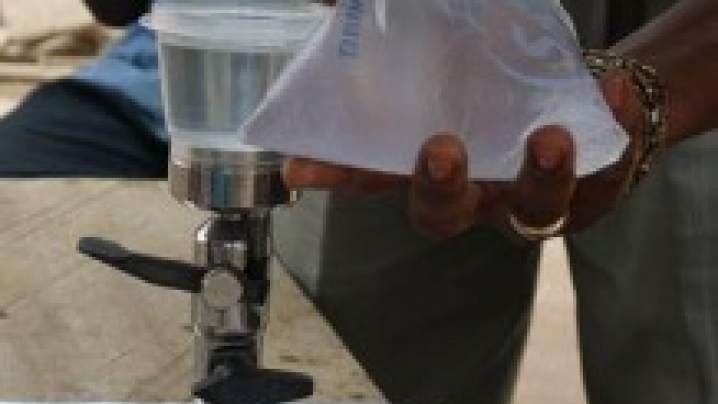Drinking water services refers to the accessibility, availability and quality of the main source used by households for drinking, cooking, personal hygiene and other domestic uses
The JMP service ladder for drinking water
The JMP service ladders are used to benchmark and compare service levels across countries. These have been updated and expanded to facilitate enhanced global monitoring of drinking water, sanitation and hygiene. The new ladders build on the established improved/unimproved facility type classification, thereby providing continuity with past monitoring, and introducing new rungs with additional criteria relating to service levels.
Improved drinking water sources are those which, by nature of their design and construction, have the potential to deliver safe water. The JMP subdivides the population using improved sources into three groups according to the level of service provided. In order to meet the criteria for a safely managed drinking water service, households must use an improved source that is:
- Accessible on premises,
- Available when needed, and
- Free from contamination.
If the improved source does not meet any one of these criteria but a round trip to collect water takes 30 minutes or less, then it is classified as a basic drinking water service. If water collection from an improved source exceeds 30 minutes it is categorised as a limited service. The JMP also differentiates populations using unimproved sources such as unprotected wells or springs, and populations drinking surface water collected directly from a river, dam, lake, stream or irrigation canal.
Drinking water ladder
-
Safely managed
Drinking water from an improved water source that is accessible on premises, available when needed and free from faecal and priority chemical contamination
-
Basic
Drinking water from an improved source, provided collection time is not more than 30 minutes for a roundtrip including queuing
-
Limited
Drinking water from an improved source for which collection time exceeds 30 minutes for a roundtrip including queuing
-
Unimproved
Drinking water from an unprotected dug well or unprotected spring
-
Surface water
Drinking water directly from a river, dam, lake, pond, stream, canal or irrigation canal
Note: Improved drinking water sources are those that have the potential to deliver safe water by nature of their design and construction, and include: piped water, boreholes or tubewells, protected dug wells, protected springs, rainwater, and packaged or delivered water
Monitoring SDG targets related to drinking water
The 2030 Agenda for Sustainable Development comprises 17 Sustainable Development Goals and 169 global targets. Goal 6 aims to ‘ensure availability and sustainable management of water and sanitation for all’ and includes targets for universal access to safe drinking water (6.1), sanitation and hygiene (6.2). WHO and UNICEF, through the JMP, are the custodian agencies responsible for global monitoring of progress on SDG targets related to WASH (see SDG Monitoring).
The JMP 2017 Thematic Report on Safely Managed Drinking Water considers the implications of SDG target 6.1, 'By 2030, achieve universal and equitable access to safe and affordable drinking water for all' and outlines JMP plans for enhanced monitoring of drinking water during the SDG period.

Enhanced data collection
Household surveys and censuses remain the primary source of information on the different types of facilities used by the population but information on service levels is also collected from administrative sources and regulators (see Data Sources).
The existing JMP core questions for household surveys have been widely used in national household surveys and censuses worldwide and have contributed to improvements in the quality and comparability of data collected over the past decade. The JMP has worked closely with international household survey programmes to develop new questions and indicators for enhanced monitoring of drinking water services.
The JMP has collaborated with the UNICEF Multiple Indicator Cluster Survey (MICS) programme to pilot and field test new questions that address drinking water availability and quality. The sixth and seventh rounds of MICS surveys includes a standardized module for direct testing of drinking water quality.
The JMP 2020 Thematic Report on Integrating Water Quality Testing in Household Surveys presents key findings and lessons from experience of integrating water quality testing in nationally representative household surveys in 33 countries (see Water Quality Monitoring).
In order to monitor safely managed drinking water services, the JMP increasingly draws on a wider range of administrative data sources, including regulatory data.. In recent years the JMP has worked with the regional association of drinking water regulators in Eastern and Southern Africa (ESAWAS) and collected valuable data from the European Union’s Urban Waste Water Treatment Directive. The JMP also worked with the World Bank’s IB-NET programme to integrate new SDG related information in the latest round of IB-NET data collection.